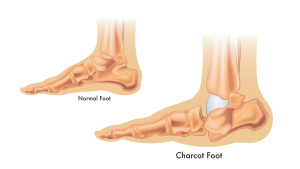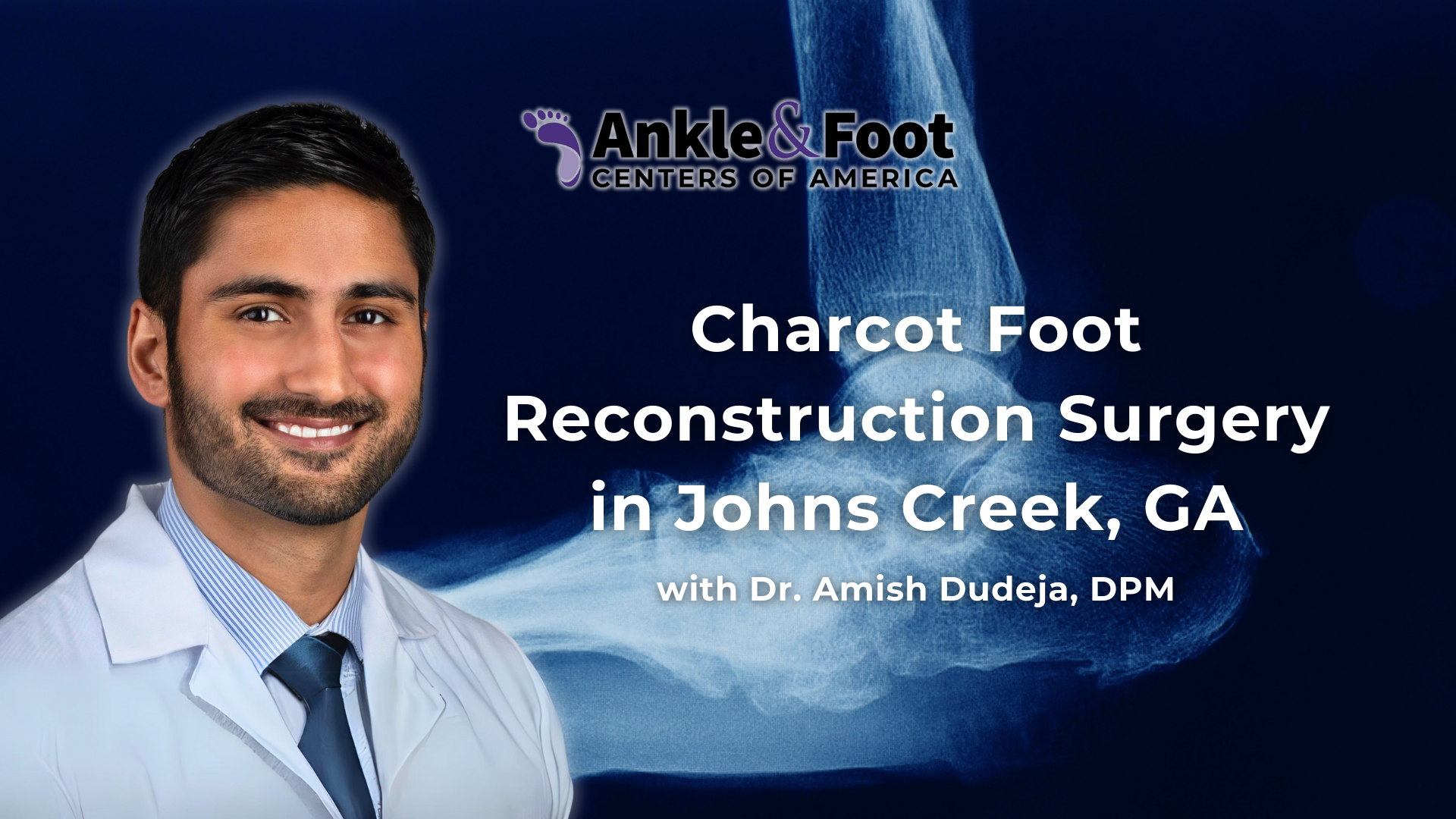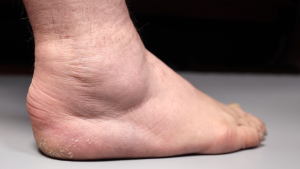Table of Contents
Introduction
Charcot Foot can severely impact your mobility and quality of life. Understanding the causes and treatment options is crucial for those affected by this condition. In this article, we will explore Charcot Foot Reconstruction Surgery, its benefits, and the recovery process. Learn why this surgery is a game-changer for many patients. Discover how expert surgeons in Johns Creek can help you regain your active lifestyle. Stay with us to learn more about this transformative procedure.
Understanding Charcot Foot
Charcot Foot, also known as Charcot Arthropathy, is a serious problem that affects the bones, joints, and tissues of the foot and ankle. It often happens to people with major nerve damage, usually from diabetes. When nerves are damaged, they can’t send the right signals for proper foot movement and feeling.
Symptoms of Charcot Foot include swelling, redness, warmth, and pain in the affected foot. In severe cases, the bones can become weak and fractures may happen, causing foot deformities.
If Charcot Foot is not treated, it can lead to severe problems. The changes in the foot structure can cause major disability, making walking hard or even impossible. Therefore, it is crucial to recognize the symptoms early and get medical help quickly.
What is Charcot Foot Reconstruction Surgery?
 Charcot Foot Reconstruction Surgery is a specialized procedure designed to restore the structure and function of a foot damaged by Charcot Arthropathy. This surgery is crucial for patients with severe deformities and instability. The primary goal is to stabilize the foot, correct deformities, and prevent further complications. Surgeons achieve this by realigning bones, fusing joints, and sometimes using metal plates, screws, or external devices for extra support.
Charcot Foot Reconstruction Surgery is a specialized procedure designed to restore the structure and function of a foot damaged by Charcot Arthropathy. This surgery is crucial for patients with severe deformities and instability. The primary goal is to stabilize the foot, correct deformities, and prevent further complications. Surgeons achieve this by realigning bones, fusing joints, and sometimes using metal plates, screws, or external devices for extra support.
Moreover, candidates for this surgery often have severe deformities that impair mobility and are at high risk for ulcers or infections. Typically, these patients have not improved with treatments like casting or orthotics. Therefore, the surgery aims to strengthen the foot’s structure, reduce pain, and improve the patient’s ability to walk. Additionally, it requires a skilled surgeon experienced in treating Charcot Arthropathy. Ultimately, with successful surgery, patients can expect better foot function, less pain, and an improved quality of life.
The Charcot Foot Reconstruction Surgery Procedure
Charcot Foot Reconstruction Surgery involves several carefully planned steps to restore stability and function to the affected foot. Before the procedure, thorough preparation is crucial, including assessing the patient’s overall health and the extent of the foot deformity.
During the surgery, the focus is on correcting the foot’s alignment and stabilizing the bones. Therefore, techniques such as realigning bones, fusing joints, and using metal plates, screws, or external devices are employed to provide a stable foundation and prevent further complications.
Additionally, the procedure itself is complex, requiring precision and expertise. Surgeons meticulously reconstruct the foot to restore its natural shape and function, ensuring the best possible outcome for the patient.
Benefits of Charcot Foot Reconstruction Surgery
 Charcot Foot Reconstruction Surgery offers several key benefits for patients suffering from severe foot deformities. Firstly, it stabilizes the foot, reducing the risk of further complications and preventing the progression of deformities. Secondly, the surgery alleviates pain, allowing patients to walk more comfortably and engage in daily activities with less discomfort.
Charcot Foot Reconstruction Surgery offers several key benefits for patients suffering from severe foot deformities. Firstly, it stabilizes the foot, reducing the risk of further complications and preventing the progression of deformities. Secondly, the surgery alleviates pain, allowing patients to walk more comfortably and engage in daily activities with less discomfort.
Additionally, the procedure improves foot function, enhancing overall mobility and independence. Patients can enjoy a better quality of life, free from the limitations caused by Charcot Foot. Moreover, by correcting the foot’s alignment, the surgery helps prevent ulcers and infections, which are common issues in untreated cases.
Overall, Charcot Foot Reconstruction Surgery is a transformative option that restores stability, reduces pain, and improves the functional ability of the foot, leading to a healthier and more active lifestyle for patients.



 Who is a candidate for Charcot Foot Reconstruction Surgery?
Who is a candidate for Charcot Foot Reconstruction Surgery?



